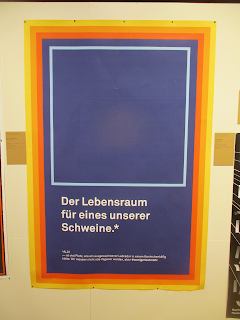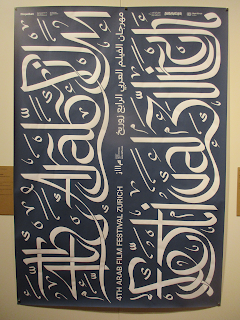MAK (Museum für angewandte Kunst/Museum of Applied Arts) is Austria's equivalent of (and actually modelled on), our very own Victoria and Albert Museum. It specialises in designs of the Wiener Werkstätte which was a pioneering workshop based in Vienna creating a range of product designs by leading artists, architects and designers at the beginning of the twentieth century. MAK museum is a really beautiful building constructed in 1871 based on Italian Renaissance designs. The museum's vast collections encompass everything from Rococo lace and Baroque glass, to early European and Asian porcelain, with strong collections of Biedermeier and Thonet furniture to boot, with strong collections of early graphic design and japanese woodcuts thrown in for good measure. On this occasion though, it was the galleries housing the collection of Viennese objects of art, craft and design from 1890-1938 that I was most interested in seeing.
The lovely Renaissance-inspired exterior of the museum with bands of classical friezes.
The wonderful interiors are even more impressive than the exterior facade. On entering the atrium the eyes are immediately drawn skywards to appreciate the airy, vaulted ceilings painted with a series of decorative grotesques supported by a host of marble columns. The atmosphere felt more akin to being in a cathedral rather than a purpose-built museum of design.
Ceiling decoration.
I made my way up to the first floor and found the galleries containing the collection of Viennese work from 1900. Here I found what must be the crowning glory of the collection, Gustav Klimt's iconic cartoon studies for The Stoclet Frieze. The mosaic frieze was commissioned for the dining room of the Palais Stoclet a Gesamtkunstwerk (total work of art) house in Brussels designed for the industrialist Adolphe Stoclet by members of the Wiener Werkstätte. These designs and the resultant mosaics are acknowledged as being some of Klimt's most important work. They encompass many of his signature themes such as love, the power of nature, and womanhood, and they are just marvels of decorative design using gold, silver, and platinum leaf. The tree at the centre of the design and its golden swirling branches has a truly hypnotic effect. The whole design is just magnificent!
Gustav Klimt - The Stoclet Frieze, 1905-1911
Another real beauty in this gallery just beside and complementing Klimt's Stoclet Frieze is Mary Margaret Macdonald Mackintosh's The Seven Princesses. It is a large gesso and gypsum panel inlaid with glass fragments and mother-of-pearl, and is another treasure to be found in MAK's collection. It is completely mesmerising with its sinuous lines, curves and narrow, minimal colour palette.
Mary Margaret Macdonald Mackintosh - The Seven Princesses, 1906
Carl Otto Czeschka - Panneau Diana, 1911
The stylish carved wood panel of the huntress Diana enhanced with gold leaf detailing above, also caught my eye. I was more than impressed with the talents of the Wiener Werkstätte artists who not content with being merely painters, were also talented enough to turn their hands to graphic, textile and furniture design.
Dagobert Peche - Salon Cabinet, 1913
Koloman Moser - Secretaire for Berta Waerndorfer, 1903
Koloman Moser - Jewelry Box, 1906
Wiener Werkstätte glassware
Koloman Moser - Seccession exhibition poster, 1899
I enjoyed the Art Nouveau-era poster above, and felt it juxtaposed and segued nicely into another exhibition in a different gallery also on the first floor. 100 Best Posters 18 GermanyAustriaSweden featured what was deemed the hundred best modern European poster designs as selected by an international jury. There were some excellent combinations of type and image on display here, and I really liked the ones which appropriated the designs of the Heinz and Aldi brands.
I had a quick look into the exhibition - Bentwood & Beyond: Thonet & Modern Furniture, about the history and influence of the iconic Thonet bentwood chairs, but found it too crowded with noisy sixth-form groups so didn't linger here for very long. Instead I headed downstairs to the the lower floor galleries where I found the MAK Design Lab. Here I discovered lots of examples of cutting edge and experimental contemporary design across all disciplines and also more examples of delicate Wiener Werkstätte glassware. There was also a very interesting exhibition entitled Kuniyoshi + Ukiyoenow, of MAK's large holdings of traditional Japanese woodcut prints contrasted with modern exponents of the medium such as Andrew Archer. Archer combines his admiration of the traditional woodcut technique with his love of basketball, and Masumi Ishikawa who incorporates modern pop culture icons into his prints which made for some great images and an updating of this classic print medium.
Bertjan Pot - Mask, 2017
Masumi Ishikawa - David Bowie Shapeshifting Comparison "Kidomaru" (Aladdin Sane), 2018
Andrew Archer - James Garden Bonsai Harden, 2018
MAK
Museum für angewandte Kunst/Museum of Applied Arts
Stubenring 5
1010 Wein
Austria








































